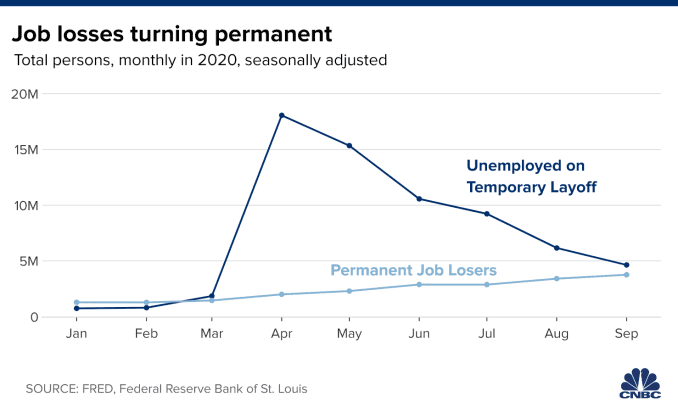PERSONAL FINANCE Unemployment was supposed to be temporary. Now, it’s permanent for almost 4 million
Millions of Americans have headed back to work since the depths of the coronavirus-induced recession in the spring.
But nearly 13 million remain unemployed — about 7 million more workers than pre-pandemic levels.
And there are worrying trends emerging among this group. Namely, a growing share of job loss is permanent (rather than temporary) and is longer-term in nature, stretching out beyond six months.
These trends carry negative financial effects for the unemployed and their families, including lost income, reduced likelihood of finding a job and lower earnings when (and if) they get one, according to economists.

The recession has hit lower-wage workers and minorities — who are less likely to be able to withstand these financial shocks — harder than other groups.
“The impacts [this] will have on the community are tremendous,” Behnaz Mansouri, a senior attorney with the Unemployment Law Project, said of the associated financial repercussions.
Permanent layoffs
The mass unemployment that hit in April was overwhelmingly thought to be a temporary phenomenon that would quickly rebound as businesses reopened, Mansouri said.
Nearly 4 in 5 unemployed workers — representing more than 18 million people — were on temporary layoff at the height of the unemployment crisis and expected to be recalled to work.
That number has since fallen to about 4.6 million, or about 37% of the unemployed, as of September — still higher than any period since modern record keeping began in the 1960s.
Source: CNBC





